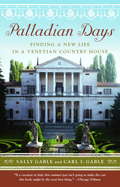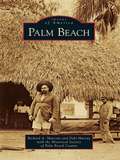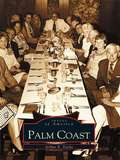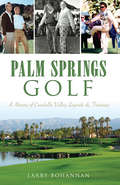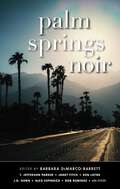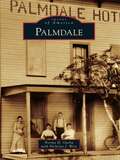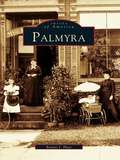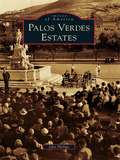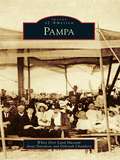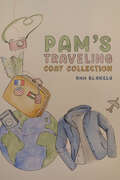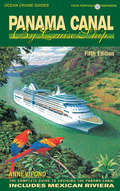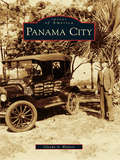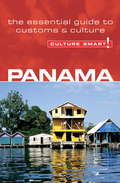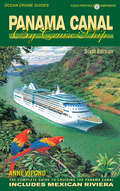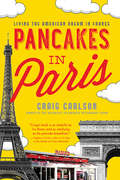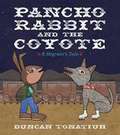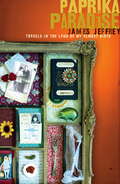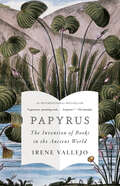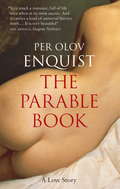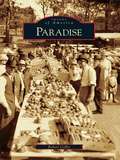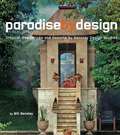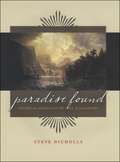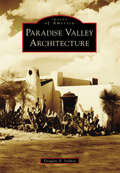- Table View
- List View
Palladian Days Finding a New Life in a Venetian Country House
by Sally Gable Carl I. Gable“Palladian Daysis nothing short of wonderful–part adventure, mystery, history, diary, and even cookbook. The Gables’ lively account captures the excitement of their acquisition and restoration of one of the greatest houses in Italy. Beguiled by Palladio and the town of Piombino Dese, they trace the history of the Villa Cornaro and their absorption of Italian life. Bravo!” –Susan R. Stein, Gilder Curator and Vice President of Museum Programs, Monticello In 1552, in the countryside outside Venice, the great Renaissance architect Andrea Palladio built Villa Cornaro. In 1989, Sally and Carl Gable became its bemused new owners. Called byTown & Countryone of the ten most influential buildings in the world, the villa is the centerpiece of the Gables’ enchanting journey into the life of a place that transformed their own. From the villa’s history and its architectural pleasures, to the lives of its former inhabitants, to the charms of the little town that surrounds it, this loving account brings generosity, humor, and a sense of discovery to the story of small-town Italy and its larger national history.
Palm Beach
by Debi Murray Richard A. Marconi Historical Society of Palm Beach CountyPalm Beach is known internationally as a winter resort where the wealthy enjoy life in a tropical paradise. More than 100 years ago, Palm Beach was far different from its well-kept beaches, estates, and fabulous Worth Avenue shopping mecca of the 21st century. When the first permanent settlers arrived, they found the area covered by thick jungle that had to be tamed before they could carve out a new life for themselves. The settlers ended up with a paradise, and when Henry Flagler decided to build a grand hotel in Palm Beach, he planted the first seed for the creation of a modern winter retreat for the rich.
Palm Coast (Images of America)
by Arthur E. DyckeWhat is paradise? Before 1969, land that would eventually become the City of Palm Coast was considered by some as nothing more than a "big pine-covered swamp." But when the corporate eyes of ITT/Levitt and Sons looked upon the virtually uninhabited land, they saw 22,000 acres of golf courses, marinas, oceanfront motels, scenic drives, and house lots awaiting the arrival of sun-seeking "pioneers." Marketing strategies targeting urban residents in the North and Midwest offered slices of land cut out of miles of forest, and soon a 500-mile infrastructure of roads, utilities, and sewer lines bound Palm Coast to a future that included becoming the largest planned unit development in Florida history.
Palm Springs Golf: A History of Coachella Valley Legends & Fairways (Sports)
by Larry BohannanAgainst a dramatic background of desert mountains, the sparkling green fairways of the Coachella Valley have attracted world-class golf tournaments, athletes and dignitaries for decades. In the 1920s, enterprising oil tycoon Tom O'Donnell built one of the first nine-hole courses in Palm Springs, and the area was a hangout for Hollywood's elite by the 1940s and '50s. Bob Hope's namesake PGA Tour event became a mainstay, while Bing Crosby, Dinah Shore, the Marx Brothers, Marilyn Monroe and more frequented over the years. Today, the valley is a renowned perennial golf destination boasting over 120 courses and exceptional resorts. Follow award-winning local golf columnist Larry Bohannan as he recounts the storied history of the game under the desert palms.
Palm Springs Noir (Akashic Noir #0)
by Barbara DeMarco-BarrettPalm Springs now joins Los Angeles, San Diego, Orange County, San Francisco, Oakland, and Berkeley in California’s Noir Series arena. "Contrary to popular belief, noir doesn’t require a bleak city street for its setting. No
Palm Springs Paradise: Vintage Photographs from America's Desert Playground
by Peter MoruzziThis book collects more than two hundred fascinating and rarely seen historical photographs of Palm Springs, newly digitized from the Palm Springs Historical Society's expansive archive. Featured are many Hollywood celebrities, including Sinatra and the Rat Pack, who vacationed there, the early days of the desert paradise, various architectural masterworks, such as the fabulous El Mirador Hotel and the extraordinary, outrageous, and irreverent people of Palm Springs.
Palmdale
by Norma H. Gurba Nicholas J. WestOne of the nation's fastest growing cities and a center for the aerospace and defense industries, Palmdale began in 1886 with the doomed colony of Palmenthal in a land plentiful with Joshua trees and jackrabbits but very little water. The gateway to the southern Antelope Valley, Palmdale has enjoyed a rich, diverse, and eventful history while resourceful pioneers created neighboring communities of unique character. Littlerock, a "pearadise," became the fruit basket for the Antelope Valley. Neil Armstrong, before becoming the first man to walk on the moon in 1969, resided in Juniper Hills. Pearblossom's rustic landscape was ideal for early cowboy movies. The crumbling site of Llano del Rio is the location of perhaps the most important nonreligious utopian colony in Western American history. Valyermo owes its existence to the San Andreas Fault, and the Big Rock Creek area became known for Noah Beery Sr.'s Paradise Trout Club, a favorite rendezvous for many Hollywood movie stars and notables.
Palmyra (Images of America)
by Bonnie J. HaysPalmyra reveals the fascinating history of the place known as "the Queen of Canal Towns." Vivid photographs highlight life as it was in this Wayne County community, which is visited by more than two hundred thousand people each year. Shown are military men and abolitionists, inventors and entrepreneurs, the founder of the Church of Jesus Christ of Latter-day Saints and the Hill Cumorah, site of the largest outdoor theater production in the United States.
Palos Verdes Estates
by John PhillipsSituated on the westernmost cliffs of the Palos Verdes Peninsula, the city of Palos Verdes Estates continues to fulfill former landowner and developer Frank Vanderlip's vision of the area as the nation's "most fashionable and exclusive residential colony," and it remains one of Los Angeles County's most affluent cities. Development of open land began in 1922 under the direction of landscape designer Frederick Law Olmsted Jr. One of the first master-planned communities in the United States, Palos Verdes Estates (PVE) became the first of the four peninsula cities to be incorporated, in 1939. Early community life revolved around the Palos Verdes Golf Club, La Venta Inn, Malaga Cove School, and the charming Malaga Cove and Lunada Bay commercial areas, both of which have been graced by their own distinctive fountains. The Malaga Cove Library, a fine example of Early Californian design executed by architect Myron Hunt in 1930, was placed on the National Register of Historic Places in 1995.
Pampa
by White Deer Land Museum Deborah Chambers Anne DavidsonThe Panhandle's first railroad, the Southern Kansas Railway of Texas, was constructed in 1886. Reaching Amarillo in 1889, the railway pulled cars filled with immigrant families and their belongings. The settlers were farmers from the east and south who came west to find water and cheap land. George Tyng, an adventurous fortune seeker, began leasing ranch land in 1887. A rail station was constructed, and Tyng eventually settled on the name "Pampa," a South American word that means "plains." Tyng was fond of saying that someday Pampa would be the "Queen City of the Plains."
Pam's Traveling Coat Collection
by Ann BlakelyI have been crushed into suitcases and backpacks. I&’ve been snowed on and sleeted on and windblown. I&’ve climbed to heights no self-respecting coat should ever have to endure. I&’ve ridden on subways, trains, and trolleys, flown in planes, and ridden in derelict taxis. I&’ve bumped along on a donkey. I have felt like I was flying in the back of a pickup truck tearing across desert flats and dunes. I&’ve waded into rivers and oceans and across streams on slippery rocks. I have even traveled on a Navy warship clear across the Pacific Ocean and helped steer it for just a little while. I&’ve petted elephants in the wild and watched a cheetah hunt his weekly meal. I&’ve climbed towers into what seemed to be the very clouds and crossed a bridge over a waterfall so tall and wide I couldn&’t see the end or the bottom of it. And more! It&’s been a lot for a coat to do! Join me in my travels!
Panama Canal By Cruise Ship - 5th Edition: The Complete Guide to Cruising the Panama Canal
by Anne VipondOne of the greatest peacetime epics of human endeavor, the creation of the Panama Canal captured, for decades, the world's imagination. Now a major cruise destination, the Canal was the 'moon launch' of its day, plunging France into near financial and political ruin before becoming the crowning achievement of America under President Theodore Roosevelt, ushering in an era of global trade and prosperity. All Panama Canal itineraries are included from Florida to the Mexican Riviera with port maps showing how to get from your ship to all the shore attractions with detail on getting around independantly or by ship tours. Several maps show each part of the transit of Panama Canal and with detail and photos of each lock.
Panama City (Images of America)
by Glenda A. WaltersFirst platted as Park Resort and later Harrison, Panama City received its current designation in 1909. More than 100 years ago, men of vision recognized the attractiveness and potential of this land along the shores of St. Andrews Bay, and those visionaries established a city that is now anticipating its centennial year. A local newspaper once reported that such men "saw that nature had dealt kindly with that section of the country and that with properly directed effort a great future awaited it." Others claimed the area was "nothing but a wilderness." Today nature's kindness to those who reside on these shores is apparent. This volume pays tribute to the city by recognizing the places, events, and, most importantly, the individuals who have inspired its success.
Panama - Culture Smart!
by Heloise CrowtherCulture Smart! provides essential information on attitudes, beliefs and behavior in different countries, ensuring that you arrive at your destination aware of basic manners, common courtesies, and sensitive issues. These concise guides tell you what to expect, how to behave, and how to establish a rapport with your hosts. This inside knowledge will enable you to steer clear of embarrassing gaffes and mistakes, feel confident in unfamiliar situations, and develop trust, friendships, and successful business relationships.Culture Smart! offers illuminating insights into the culture and society of a particular country. It will help you to turn your visit-whether on business or for pleasure-into a memorable and enriching experience. Contents include* customs, values, and traditions* historical, religious, and political background* life at home* leisure, social, and cultural life* eating and drinking* do's, don'ts, and taboos* business practices* communication, spoken and unspoken"Culture Smart has come to the rescue of hapless travellers." Sunday Times Travel"... the perfect introduction to the weird, wonderful and downright odd quirks and customs of various countries." Global Travel"...full of fascinating-as well as common-sense-tips to help you avoid embarrassing faux pas." Observer"...as useful as they are entertaining." Easyjet Magazine"...offer glimpses into the psyche of a faraway world." New York Times
PANAMA CANAL BY CRUISE SHIP – 6th Edition: The Complete Guide to Cruising the Panama Canal
by Anne VipondOne of the greatest peacetime epics of human endeavor, the creation of the Panama Canal captured, for decades, the world's imagination. Now a major cruise destination, the Canal was the 'moon launch' of its day, plunging France into near financial and political ruin before becoming the crowning achievement of America under President Theodore Roosevelt, ushering in an era of global trade and prosperity. All Panama Canal itineraries are included from Florida to the Mexican Riviera with port maps showing how to get from your ship to all the shore attractions with detail on getting around independantly or by ship tours. Several maps show each part of the transit of Panama Canal and with detail and photos of each lock. Thoroughly updated in 2019.
Pancakes in Paris: Living the American Dream in France
by Craig CarlsonParis was practically perfect...<P><P> Craig Carlson was the last person anyone would expect to open an American diner in Paris. He came from humble beginnings in a working-class town in Connecticut, had never worked in a restaurant, and didn't know anything about starting a brand-new business. But from his first visit to Paris, Craig knew he had found the city of his dreams, although one thing was still missing-the good ol' American breakfast he loved so much.<P> Pancakes in Paris is the story of Craig tackling the impossible-from raising the money to fund his dream to tracking down international suppliers for "exotic" American ingredients... and even finding love along the way. His diner, Breakfast In America, is now a renowned tourist destination, and the story of how it came to be is just as delicious and satisfying as the classic breakfast that tops its menu.
Pancho Rabbit And The Coyote: A Migrant's Tale
by Duncan TonatiuhIn this allegorical picture book, a young rabbit named Pancho eagerly awaits his papa’s return. Papa Rabbit traveled north two years ago to find work in the great carrot and lettuce fields to earn money for his family. When Papa does not return, Pancho sets out to find him. He packs Papa’s favorite meal—mole, rice and beans, a heap of warm tortillas, and a jug of aguamiel—and heads north. He meets a coyote, who offers to help Pancho in exchange for some of Papa’s food. They travel together until the food is gone and the coyote decides he is still hungry . . . for Pancho! Duncan Tonatiuh brings to light the hardship and struggles faced by thousands of families who seek to make better lives for themselves and their children by illegally crossing the border.
Papa Brings Me the World
by Jenny Sue Kostecki-ShawJenny Sue Kostecki-Shaw's Papa Brings Me the World is a poignant picture book that celebrates the bond between parent and child, and follows their long-distance trip around the world.Most parents drive a car or ride a bus or train to work—but not Lulu’s papa. He navigates mountains, deserts, and oceans, each time returning home with pockets full of treasures. There’s an ancient calculator from China, a musical mbira from Zimbabwe, and a special game from Sumatra. But the best treasures are special stories Papa tells when he comes home—tales of playing peekaboo with rare birds in the Andes and befriending dragons in the Irish Sea.This long-distance love story between parent and child celebrates inclusivity, imagination, and the richness of global cultures.Christy Ottaviano Books
Paprika Paradise: Travels in the Land of My Almost Birth
by James JeffreyFor James Jeffrey, his mother?s homeland of Hungary has always featured in family stories ? sometimes as a fairytale land, other times as an exotic parallel universe. It is a place where storks build nests as large as tables on chimney tops and grandparents live in suburbs called Uranium Town. People say `hello? when they mean `goodbye?, have no word for `he? or `she?, and bestow an almost godlike status on cakes and lard.It is the country where James?s mother, a volatile divorcee who could outflirt Zsa Zsa Gabor, and his father, a coal miner from a particularly sensible part of England, began an unlikely romance that lasted until the other end of the earth.With his wife, children and still-warring parents in tow, James decided that the time had come to go back to Hungary. Their journey into the little-known paprika paradise is hilarious, thought-provoking and completely unpredictable.`Joyous, illuminating and enchanting? Herald Sun
Papyrus: The Invention of Books in the Ancient World
by Irene VallejoA "masterly" (Economist), prize-winning, internationally bestselling history of books in the ancient world"Exquisite. . . . Beautifully translated into English by Charlotte Whittle, who is able to convey both Vallejo&’s passionate narrative presence and her synthesising intelligence.&” —The GuardianLong before books were mass-produced, hand-copied scrolls made from Nile River reeds were the treasures of the ancient world. Emperors and pharaohs, determined to possess them, dispatched emissaries to the edges of the known world to bring them back. Exploring the deep and fascinating history of the written word, from the oral tradition to scrolls to codices, internationally bestselling author Irene Vallejo shows that books have always been a precious and precarious vehicle for civilization.Through fascinating stories from history, insightful readings of the classics, and poignant personal reflection, Vallejo traces the dramatic history of the book and the fight for its survival. At its heart a spirited love letter to language itself, Papyrus takes readers on a journey across the centuries to discover how a simple reed grown along the banks of the Nile would give birth to a rich and cherished culture.
The Parable Book
by Per Olov Enquist"The love that dare not speak its name . . ." Sweden, 1949. A boy of 15, cutting across a garden, chances upon a woman of 51. What ensues is cataclysmic, life-altering. All the more because it cannot be spoken of. Can it never be spoken of?Looking back in late old age at an encounter that transformed him suddenly yet utterly, P.O. Enquist, a titan of Swedish letters, has decided to "come out" - but in ways entirely novel and unexpected. He has written the book that smoldered unwritten within him his entire life. The book he had always seen as the one he could not write.This poignant memoir of love as a religious experience - as a modern form of the Resurrection - is also a deeply felt reflection on the transitoriness of friendship, the fraught nature of family relationships, and the importance of giving voice to what cannot be forgotten. A parable as hauntingly intense as any Bergman film.Translated from the Swedish by Deborah Bragan-Turner
Paradise
by Robert ColbyIt was more than 150 years ago that Uncle Billy" Leonard took refuge from the hellish heat in the shade beneath a Ponderosa pine, breathing in relief to his companions: "Boys, this has got to be Paradise!" Or so the story goes. Yet it is no fiction that the settlement grew to be more than just a stop on the way from Oroville or Chico to the gold country. Although Paradise was surrounded by mines, it had little gold itself. Disappointed miners made a living cutting timber, working at one of the sawmills, or hacking out homesteads in the foothill forests. Diamond Match Company built a railroad to its sawmill, locating the depot a mile west of town in what was sometimes called "New Paradise." For generations before houses began to replace its orchards, Paradise was an apple-growing center, home to harvest festivals that are echoed in today's annual Johnny Appleseed Days."
Paradise By Design
by Bill BensleyEclectic, baroque and sophisticated-such are the characteristics of the lifestyle resorts and extravagant private residences crafted by the renowned Bensley Design Studios in Bangkok and Bali. The 27 resorts and homes featured in Paradise by Design are set amidst resplendent tropical gardens and spread from China to India to Bali. Focused in Asia Pacific, these buildings are unconventional, sensual and hold a special reverence for the tropical climate. Focusing not only on the architecture of the buildings, but also the landscape design, interior design, horticulture and fine arts and crafts found within and without these buildings, Paradise by Design transcends the traditional and details an inclusive look at some of the most stylish and diverse homes and resorts in Asia.
Paradise Found: Nature in America at the Time of Discovery
by Steve NichollsSeamlessly blending firsthand accounts from centuries past with the findings of scientists today, Nicholls brings North America's spectacular environment back to vivid life, and illustrates how the landscape looked when early explorers first found it.
Paradise Valley Architecture
by Douglas B. SydnorThree surveyors in the late 19th century were so attracted to the area's desert beauty that they named it "the Paradise Valley." Starting in the 1920s, adobe homes were constructed in various revival styles. In 1936, the Camelback Inn resort set a high-quality standard with an inviting and relaxed character. Other guest lodges arrived, including the Hermosa Inn and the El Chorro Lodge. The 1950s brought more luxurious resorts, including the Paradise Valley Racquet Club and the Mountain Shadows Resort. With the threat of Phoenix or Scottsdale annexing the area, the citizens started debating incorporation in 1949 and were successful in 1961. Churches, schools, town facilities, and single-family homes followed. Numerous town ordinances were adopted to preserve a quiet, desert lifestyle such as burying all utilities, restrictive zoning, and hillside preservation.
